Top Rankings
Kannapolis City Schools School District ranks among the top 20% of public school district in North Carolina for:
Category
Attribute
Diversity
Most diverse schools (Top 1%)
Community Size
Largest student body (number of students) (Top 1%)
For the 2025 school year, there are 7 public elementary schools serving 3,609 students in Kannapolis City Schools School District. This district's average elementary testing ranking is 2/10, which is in the bottom 50% of public elementary schools in North Carolina.
Public Elementary Schools in Kannapolis City Schools School District have an average math proficiency score of 33% (versus the North Carolina public elementary school average of 50%), and reading proficiency score of 34% (versus the 49% statewide average).
Minority enrollment is 76% of the student body (majority Hispanic), which is more than the North Carolina public elementary school average of 57% (majority Black and Hispanic).
Overview
This School District
This State (NC)
# Schools
9 Schools
2,174 Schools
# Students
5,385 Students
1,091,007 Students
# Teachers
350 Teachers
73,903 Teachers
Student : Teacher Ratio
15:1
15:1
District Rank
Kannapolis City Schools School District, which is ranked within the bottom 50% of all 320 school districts in North Carolina (based off of combined math and reading proficiency testing data) for the 2021-2022 school year.
The school district's graduation rate of 87% has increased from 86% over five school years.
Overall District Rank
#257 out of 325 school districts
(Bottom 50%)
(Bottom 50%)
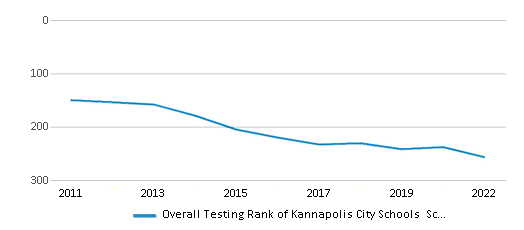
Math Test Scores (% Proficient)
34%
51%

Reading/Language Arts Test Scores (% Proficient)
35%
50%
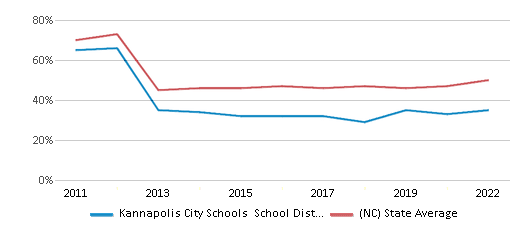
Science Test Scores (% Proficient)
50%
63%
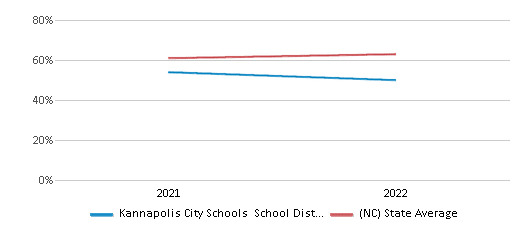
Graduation Rate
87%
86%
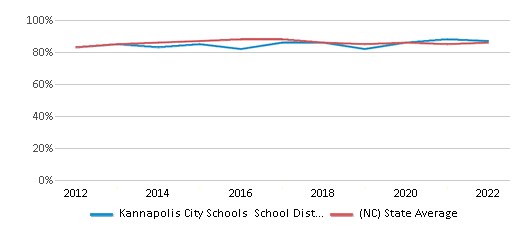
Students by Ethnicity:
Diversity Score
0.71
0.72
# American Indian Students
10 Students
12,383 Students
% American Indian Students
n/a
1%
# Asian Students
47 Students
47,310 Students
% Asian Students
1%
4%
# Hispanic Students
2,146 Students
227,576 Students
% Hispanic Students
40%
21%
# Black Students
1,434 Students
268,051 Students
% Black Students
27%
25%
# White Students
1,315 Students
465,086 Students
% White Students
24%
43%
# Hawaiian Students
1 Student
1,488 Students
% Hawaiian Students
n/a
n/a
# Two or more races Students
432 Students
69,126 Students
% of Two or more races Students
8%
6%
Students by Grade:
# Students in PK Grade:
27
23,192
# Students in K Grade:
413
109,971
# Students in 1st Grade:
403
114,331
# Students in 2nd Grade:
413
118,121
# Students in 3rd Grade:
406
111,941
# Students in 4th Grade:
394
114,493
# Students in 5th Grade:
382
115,565
# Students in 6th Grade:
378
116,023
# Students in 7th Grade:
390
113,393
# Students in 8th Grade:
403
115,504
# Students in 9th Grade:
564
11,612
# Students in 10th Grade:
457
10,182
# Students in 11th Grade:
457
8,704
# Students in 12th Grade:
298
7,975
# Ungraded Students:
-
-
District Revenue and Spending
The revenue/student of $11,503 is higher than the state median of $11,187. The school district revenue/student has stayed relatively flat over four school years.
The school district's spending/student of $11,165 is less than the state median of $11,612. The school district spending/student has stayed relatively flat over four school years.
Total Revenue
$62 MM
$17,307 MM
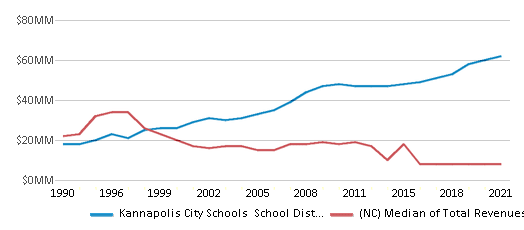
Spending
$60 MM
$17,964 MM
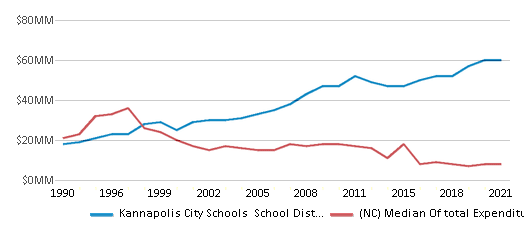
Revenue / Student
$11,503
$11,187
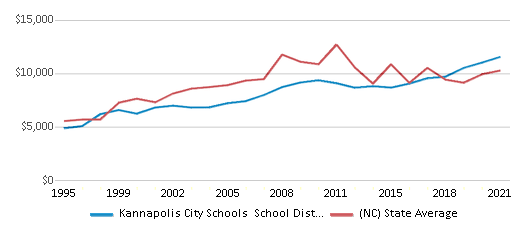
Spending / Student
$11,165
$11,612
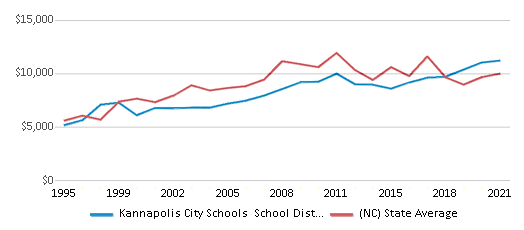
Best Kannapolis City Schools School District Public Elementary Schools (2025)
School
(Math and Reading Proficiency)
(Math and Reading Proficiency)
Location
Grades
Students
Rank: #11.
Jackson Park Elementary School
(Math: 64% | Reading: 44%)
Rank:
Rank:
6/
Top 50%10
1400 Jackson Street
Kannapolis, NC 28083
(704) 933-2831
Kannapolis, NC 28083
(704) 933-2831
Grades: K-5
| 435 students
Rank: #22.
North Kannapolis Elementary School
(Math: 45-49% | Reading: 30-34%)
Rank:
Rank:
4/
Bottom 50%10
800 N Walnut Street
Kannapolis, NC 28081
(704) 933-2935
Kannapolis, NC 28081
(704) 933-2935
Grades: PK-5
| 290 students
Rank: #33.
Forest Park Elementary School
(Math: 35% | Reading: 36%)
Rank:
Rank:
3/
Bottom 50%10
1333 Forest Park Drive
Kannapolis, NC 28083
(704) 932-8121
Kannapolis, NC 28083
(704) 932-8121
Grades: K-5
| 476 students
Rank: #44.
Fred L Wilson Elementary School
Magnet School
(Math: 35-39% | Reading: 30-34%)
Rank:
Rank:
3/
Bottom 50%10
1401 Pine Street
Kannapolis, NC 28081
(704) 932-8656
Kannapolis, NC 28081
(704) 932-8656
Grades: K-5
| 432 students
Rank: #55.
Kannapolis Middle School
(Math: 28% | Reading: 36%)
Rank:
Rank:
2/
Bottom 50%10
1000 Virginia Dare Street
Kannapolis, NC 28081
(704) 932-4102
Kannapolis, NC 28081
(704) 932-4102
Grades: 6-8
| 1,171 students
Rank: #66.
Shady Brook Elementary School
(Math: 25-29% | Reading: 25-29%)
Rank:
Rank:
2/
Bottom 50%10
903 Rogers Lake Road
Kannapolis, NC 28081
(704) 933-2434
Kannapolis, NC 28081
(704) 933-2434
Grades: K-5
| 311 students
Rank: #77.
Gw Carver Elementary School
Magnet School
(Math: 25% | Reading: 23%)
Rank:
Rank:
1/
Bottom 50%10
525 East C St
Kannapolis, NC 28083
(704) 932-4161
Kannapolis, NC 28083
(704) 932-4161
Grades: K-5
| 494 students
Recent Articles

Year-Round Or Traditional Schedule?
Which is more appropriate for your child? A year-round attendance schedule or traditional schedule? We look at the pros and cons.

Why You Should Encourage Your Child to Join a Sports Team
Participating in team sports has a great many benefits for children, there is no doubt. In this article you will learn what those benefits are.

White Students are Now the Minority in U.S. Public Schools
Increasing birth rates among immigrant families from Asia and Central and South America, combined with lower birth rates among white families, means that for the first time in history, public school students in the United States are majority-minority. This shift in demographics poses difficulties for schools as they work to accommodate children of varying language abilities and socio-economic backgrounds.





